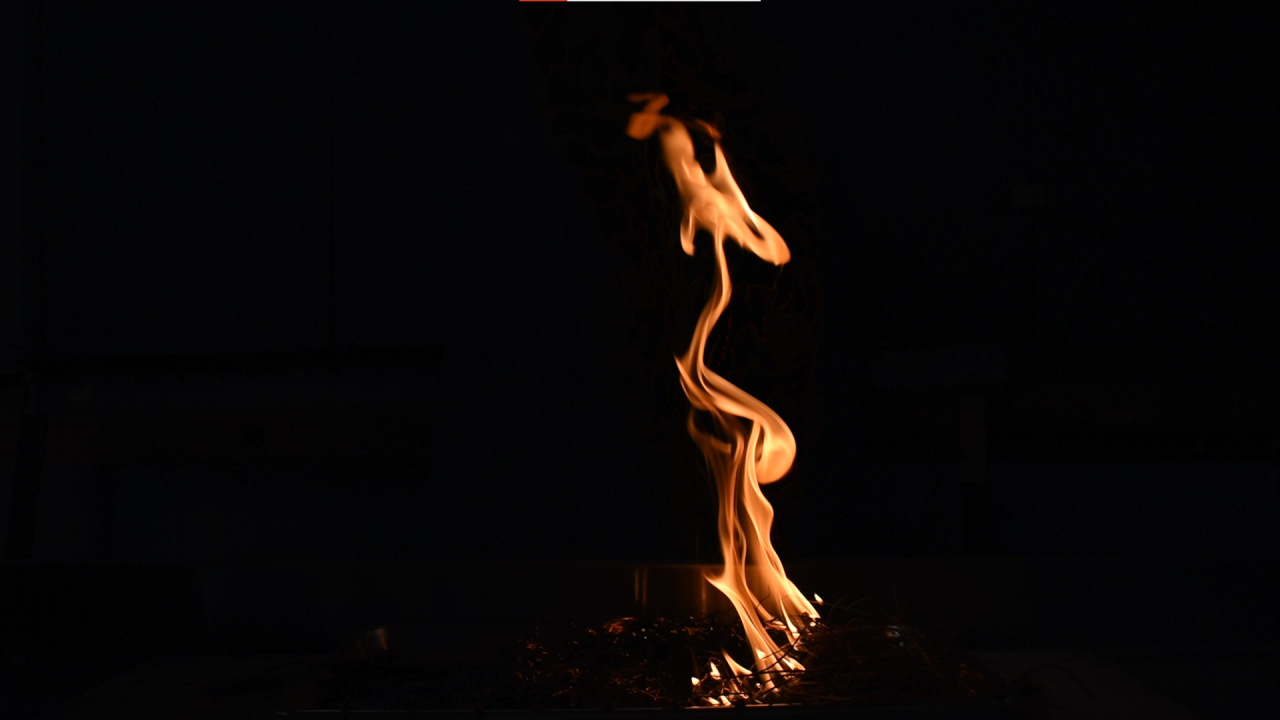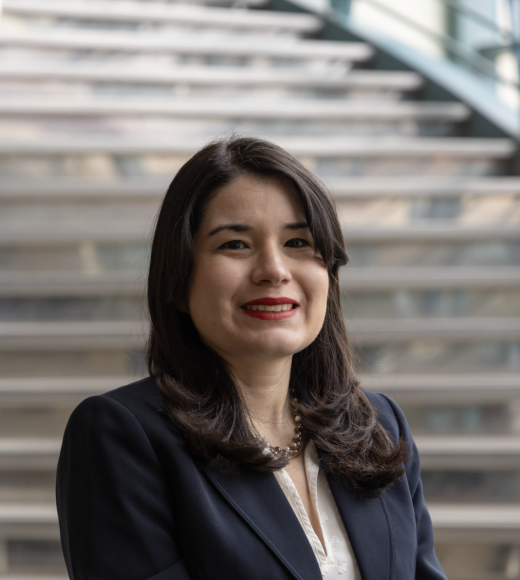
Sparking Change in Wildfire Research
How Assistant Professor Jeanette Cobian-Iñiguez uses mechanical engineering to understand the fundamentals of wildfires

When Jeanette Cobian-Iñiguez was pursuing her undergraduate degree in mechanical engineering at the University of California,
San Diego, she joined a research group focused on the heat transfer and fluid mechanics of fire. She found herself drawn to the science, math and physics of the research.
Then, there was a wildfire where she lived.
“My family got the recommended evacuation notice,” she said. “We evacuated across the border to my grandmother’s house in Tijuana just to be safe.”
She never looked back. Now a new assistant professor of mechanical and aerospace engineering at the University of California, Davis, Cobian-Iñiguez uses basic science and applied research to better understand how wildfire systems behave and the patterns at which fires ignite and spread.
The information she discovers can then inform people with boots on the ground who are making decisions about wildfire management (policymakers, emergency personnel, etc.), as well as people making simulation models and software that help predict and forecast wildfire spread.
Burning Questions: How Wildfires Ignite and Spread
It makes sense, to Cobian-Iñiguez, to study fire from the mechanical engineering perspective.
“Mechanical engineering is essentially the study of anything that is a dynamical system or a system that has motion,” she said. “So, from that perspective, fire behavior [research] is the study of a dynamical system, which is fire. Heat transfer is thermal energy in motion, and fluid mechanics is the movement of fluids, not to mention combustion, which has to do with the changes in state, so the basic science of how fire grows is inherently mechanical engineering.”
Cobian-Iñiguez feels her research will fit well at UC Davis, which already has a strong combustion program. UC Davis is also home to the Air Quality Research Center and the Department of Land, Air and Water Resources, with which she can foresee collaborations in areas outside of combustion.

One of Cobian-Iñiguez’s current projects, funded by a National Science Foundation grant, aims to better understand fire
behavior when it encounters forest fuels, namely small sticks and other parts of trees or shrubs that have been cut back for forest management. Much of the previous research has been done on pine needles, which are very thin, so Cobian-Iñiguez and her team are modeling the intensity and spread of fire as it burns through these thicker sticks. The next phase of the research, a collaboration with soil ecologists, will analyze soil to see how it is affected by fires.
Another project she is working on has continued to evolve since she began investigating it in her early faculty years. In a recent paper, Cobian-Iñiguez investigated how metal particles, like stainless steel sparks, ignite fires when they catch grassy species in California, which are common causes of ignition because they are very dry and abundant.
“We wanted to answer the question,” she said, “‘If you're doing construction near a vacant lot, which happens very often as the wildland-urban interface and cities grow, what conditions should you be aware of in case there's something like a red flag warning?’”
The initial findings on how the grass behaves when ignited are finished, so now Cobian-Iñiguez is testing the ignition conditions when there is wind flow. Her team is currently experimenting with stable wind — usually associated with calm weather and cool air — and then will move on to gusty winds to find out how fires ignite and spread when there are sudden changes in the speed of wind or the appearance of wind gust. This research was funded in part by Cobian-Iñiguez’s Hellman Fellowship, which she received in 2022.
“We actually don’t have a lot of fundamental knowledge of fire behavior under gusty winds, and as we know from fires, especially the recent fires in Southern California, there’s a prevalence of gusty wind when we have wildfires,” she said. “Understanding how fires behave under those conditions is really important.”
Wildfire Communication Without Borders
Cobian-Iñiguez’s work also encompasses wildfire communication, particularly across borders and cultures.
Through funding from the California Department of Forestry and Fire Protection, or CAL Fire, she runs the Cross-Border and Bilingual Wildland Urban Interface, or WUI, where she conducts cross-border fire behavior research with Mexico and Latin American countries to determine the similarities and differences in fire management, as well as establish collaborations to tackle these research questions together.
She will also explore the impacts of fire on people through the preparedness of fire-impacted populations, specifically multilingual communities. Her group aims to understand the landscape in the state of California of wildfire education and communications materials in Spanish and how they compare to English to identify the gaps and make recommendations to agencies who produce these materials.

In the future, she will use this study as a template to expand to other languages to understand the broader landscape of wildfire education and communication to make sure all communities are prepared and well-informed.
Through her Cross-Border and Bilingual WUI program, Cobian-Iñiguez also contributes to helping keep the Spanish-speaking populations of fire-impacted communities informed. She works with a team of undergraduate student researchers to offer free translation services for English-language wildfire preparedness materials.
It’s one of the ways Cobian-Iñiguez gives back to her community, just as continuing her faculty career at UC Davis is one way she gives back to the UC system, through which she earned nearly all of her higher education opportunities and degrees: She completed her Bachelor of Science in mechanical engineering at UC San Diego, her Ph.D. in mechanical engineering at UC Riverside, was a postdoctoral scholar at UC Berkeley, and an assistant professor of mechanical engineering at UC Merced. She also earned her Master of Science in mechanical engineering from California State University, Los Angeles.
In fact, Cobian-Iñiguez views it as a kind of personal mission to give back to the UC system, see where her research takes her and find opportunities to best serve the students, particularly as a Latinx woman.
“I'm really excited about exploring new directions here at UC Davis that maybe I haven't worked on before,” she said. “I look forward to being a role model and working with organizations that have programs that serve all students, including Latinx students. Especially now that UC Davis [has achieved eligibility to be designated] a Hispanic-serving institution, I look forward to working with organizations that serve the diverse student body that is UC Davis.”
